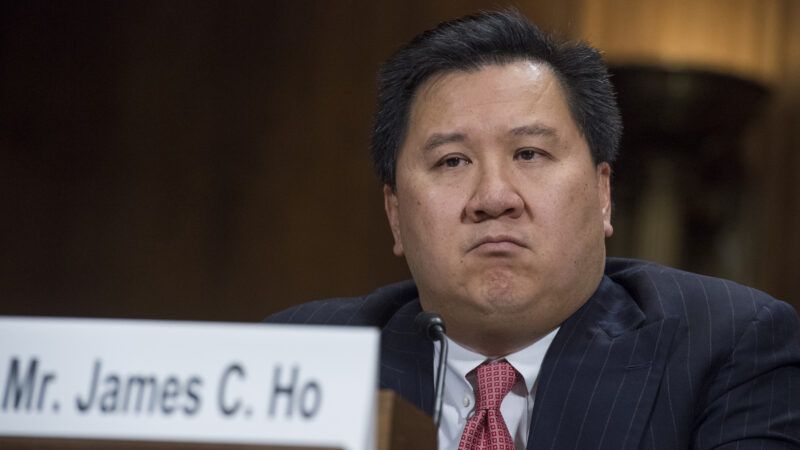Restraining Orders Do Not Prove That People Are 'Dangerous'
The Biden administration is defending a federal law that disarms Americans based on "boilerplate language" in orders that judges routinely grant.

Three decades ago, Congress enacted a law that seemed commonsensical: It prohibits gun possession by people who are subject to restraining orders aimed at preventing domestic violence. But as the legal battle over that rule shows, its intuitive appeal is complicated by the reality that judges often issue such orders without any credible evidence that the respondent poses a danger.
That policy, according to a unanimous decision by the U.S. Court of Appeals for the 5th Circuit, is inconsistent with the Second Amendment. Not so, says the Biden administration, which last month filed a petition asking the Supreme Court to overturn the 5th Circuit's decision.
Under the test that the Supreme Court established in a landmark case last June, the constitutional question is whether disarming the targets of restraining orders is "consistent with the Nation's historical tradition of firearm regulation." That tradition, Solicitor General Elizabeth Prelogar argues in her petition, shows that "the Second Amendment allows the government to disarm dangerous individuals—that is, those who would pose a serious risk of harm to themselves or to others if allowed to possess a firearm."
Is a restraining order enough to establish that someone is in fact "dangerous"? There are several reasons to doubt that premise.
As Judge James Ho notes in an opinion concurring with the 5th Circuit's decision, "Family court judges may face enormous pressure to grant civil protective orders—and no incentive to deny them." Even when there is little evidence that someone is apt to assault a spouse or other "intimate partner," that possibility, combined with the negative publicity and career consequences it might entail, tends to loom much larger than the risk of approving an unnecessary order.
It is therefore not surprising that restraining orders "are granted to virtually all who apply," as Elaine Epstein, former president of the Massachusetts Women's Bar Association, noted in 1993. And "because they are incredibly easy to obtain," family and matrimonial attorney Liz Mandarano observed in 2011, "orders of protection are misused."
How often that happens is a matter of dispute. But because protective orders can help parties in divorce cases obtain favorable rulings on "critical issues" such as financial support, exclusion from the marital residence, disposition of property, and child custody, Ho says, they are "a tempting target for abuse."
Harvard law professor Jeannie Suk notes that "many divorce lawyers routinely recommend pursuit of civil protection orders for clients in divorce proceedings, either because they assume abused women are not candid about being abused or as a tactical leverage device." Mandarano cited studies suggesting that unfounded abuse allegations are common, accounting for most protective orders in some jurisdictions.
Congress was not oblivious to that concern. The provision dealing with restraining orders requires a hearing, and it establishes criteria for orders.
Yet the law says a finding that the respondent "represents a credible threat" is not necessary if the order explicitly prohibits "the use, attempted use, or threatened use of physical force" that "would reasonably be expected to cause bodily injury." The upshot, Judge Cory Wilson notes in the 5th Circuit decision, is that people can lose their Second Amendment rights even if they have no history of violence, based on nothing more than "a domestic restraining order that contains boilerplate language."
That outcome, Ho says, "may be especially perverse considering the common practice of 'mutual' protective orders": A judge "may see no downside in forbidding both parties from harming one another," including the victim of domestic abuse as well as the perpetrator. In such cases, Ho writes, the law "effectively disarms victims of domestic violence," potentially putting them "in greater danger than before."
The problem that Congress was trying to address is real: guns in the hands of domestic abusers who might use them to injure or kill "an intimate partner." But its solution affects many Americans who are not "dangerous," which makes it hard to reconcile with the constitutional right to armed self-defense.
© Copyright 2023 by Creators Syndicate Inc.
Show Comments (24)